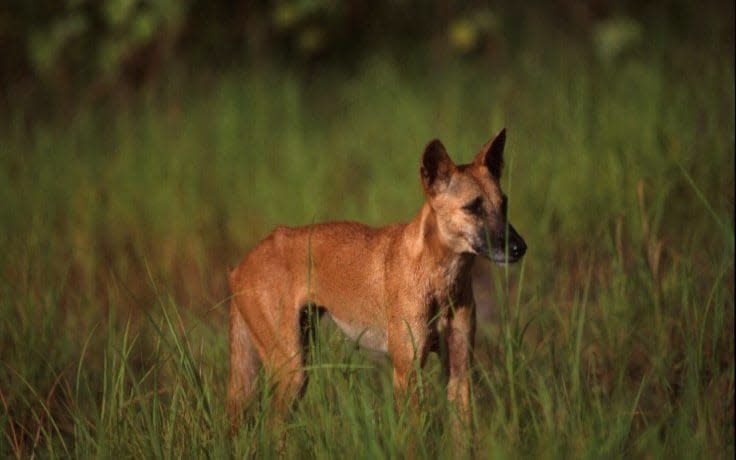Culling makes dingoes grow by 10 per cent, researchers say

Dingoes have grown by approximately 10 per cent in Australia since the 1940s due to a decades-long campaign of poisoning by local farmers, new research from the University of Sydney suggests.
Those animals who survive in areas where culls have been used to control the population have grown larger and more muscular because the size of their packs has diminished, resulting in less competition for food.
The kangaroo population has grown in areas where the dingo population is suppressed. Kangaroos are the primary food source for dingoes.
The study, published in the Biological Journal of the Linnean Society, compared the skull size of dingoes in baited regions to those in areas where culls are not enforced.
"Skulls from the baited regions grew by about four millimetres since poison baiting was introduced," said Professor Michael Letnic, lead author of the paper.
"This equates to roughly a kilogramme in body mass."
Dingoes typically only grow to 10-20kg.
The pesticide sodium fluoroacetate, known as 1080, is the poison of choice when it comes to dingo baiting. It is stuffed into raw meat, then dropped into the bush, usually via helicopter.
However, the practice of aerial baiting has come under increased scrutiny as it often results in non-targeted species being killed. A 2018 trial found that 71 per cent of meat-baits were consumed by unintended targets.
Due to the increased size of the dingoes, the dosage required to kill them has slowly risen over time.
Matthew Crowther, one of the study’s co-authors, said: “Smaller dingoes need less poison for a lethal dose, so are more likely to be killed by baiting. This leaves the larger dingoes to survive and breed.”
The study is also impactful as it is one of the first to show that vertebrates, such as dingoes, change from pesticide usage by humans. This pattern of behaviour has previously only been recorded in invertebrate pests, such as insects.
"Our interventions have consequences -- and they're actually quite predictable consequences," says Professor Letnic. "Whatever pressures we put on animal populations -- be it pesticides or not -- there will be side effects."

 Yahoo News
Yahoo News 
